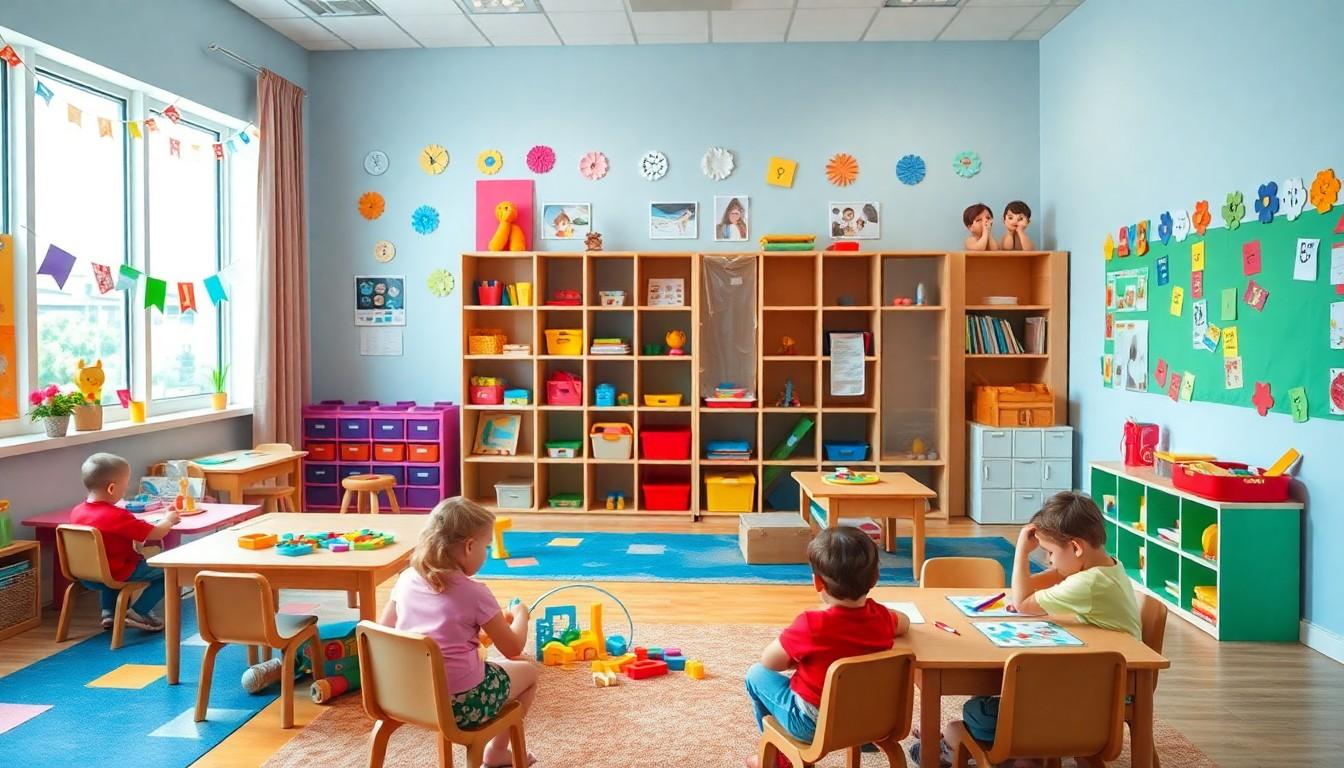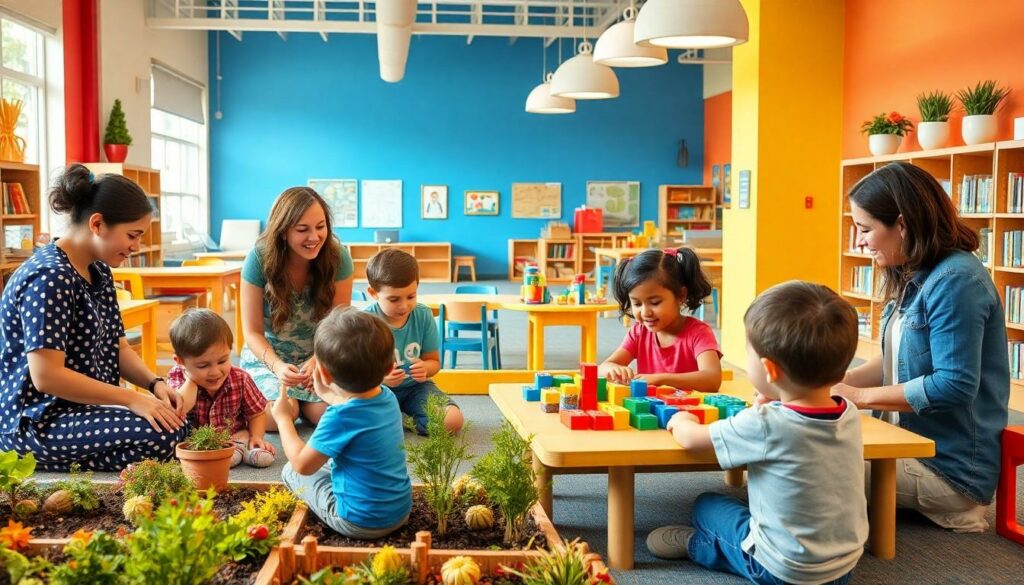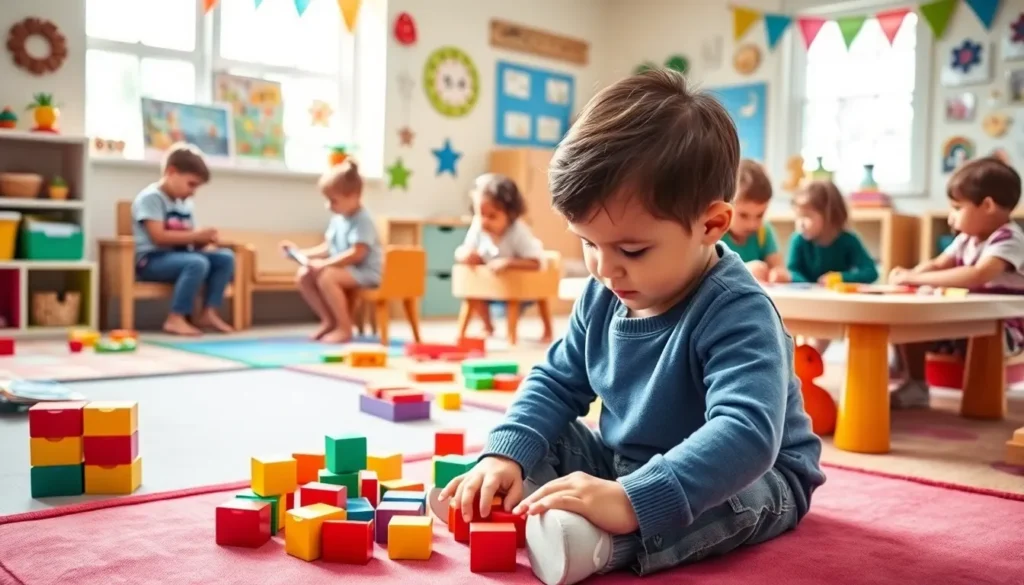In a world where toddlers seem to have more energy than a double shot of espresso, the concept of an Early Learning Village is a game changer. Imagine a vibrant community where little ones can explore, play, and learn in an environment designed just for them. It’s like a theme park for education, but without the long lines and overpriced cotton candy!
These early learning villages are more than just colorful classrooms; they’re nurturing spaces that spark curiosity and creativity. With engaging activities and dedicated educators, kids can dive into their learning adventures headfirst. So why settle for the ordinary when you can give your child the extraordinary? An Early Learning Village might just be the secret sauce to setting them up for a lifetime of success.
Table of Contents
ToggleOverview of Early Learning Village
Early Learning Villages create vibrant spaces for toddlers, focusing on exploration and play. These environments engage children through hands-on experiences and creative activities. Educators in the village nurture curiosity and encourage personal growth.
The design of these facilities captures children’s attention, making learning enjoyable and effective. Colorful classrooms, interactive play areas, and dedicated gardens enhance the child’s educational journey. Such settings aim to foster social skills and develop emotional intelligence alongside academic readiness.
Research shows that early exposure to diverse experiences contributes to cognitive development. Children participating in these programs often demonstrate improved problem-solving abilities. Regular interaction with peers promotes teamwork and communication skills essential for future learning environments.
Parental involvement is crucial in these villages. Educators encourage parents to engage with daily activities, creating a strong support system for children. Collaboration between families and educators enhances the child’s overall growth experience.
Beyond academics, the villages focus on holistic development. Physical activities play a significant role in building motor skills. Creative arts and music programs promote self-expression and confidence.
Early Learning Villages represent an innovative approach to education. They prioritize fostering a love for learning while preparing children for their future academic paths. By emphasizing interactive and engaging methods, these environments support essential life skills.
Key Features of Early Learning Village

Early Learning Villages boast several key features that enhance a child’s educational experience. These features create interactive environments where learning thrives.
Curriculum and Learning Approaches
Curriculum design emphasizes play-based learning, allowing children to absorb knowledge through exploration. Interactive activities engage various learning styles, accommodating visual, auditory, and kinesthetic learners. Educators utilize inquiry-based approaches, encouraging children to ask questions and explore subjects deeply. Social skills development occurs naturally during collaborative activities, as children work together, solve problems, and share insights. The curriculum also integrates STEM concepts alongside arts and music, promoting creativity while grounding children in essential academic principles.
Facilities and Resources
Facilities feature colorful classrooms designed to stimulate curiosity and creativity. Dedicated play areas include sensory gardens, building blocks, and art stations to support hands-on learning. Safe outdoor spaces encourage physical activity, enhancing motor skills development. Resources such as books, technology, and learning materials are readily accessible, ensuring children have the tools necessary for success. Staff remain trained in the latest educational practices, guaranteeing children receive high-quality instruction throughout their time at the village.
Benefits of Early Learning Village
Early Learning Villages provide numerous benefits for children’s growth and development. They focus on nurturing various skills that are essential for success in later education.
Social and Emotional Development
Social skills flourish in an Early Learning Village setting. Interactions with peers promote cooperation, sharing, and conflict resolution. Children engage in group activities that teach them about empathy and understanding others’ feelings. Emotional intelligence also receives emphasis through guided discussions and role-playing scenarios. As a result, children develop confidence and self-regulation skills that are crucial for personal interactions and future classroom settings.
Cognitive Skills Enhancement
Cognitive development accelerates through hands-on learning experiences in Early Learning Villages. Specific activities encourage critical thinking and problem-solving abilities. Engaging with diverse materials fosters curiosity and creativity. Children explore STEM concepts, gaining knowledge through experimentation and inquiry. Research shows that early exposure prepares them for advanced academic challenges. Moreover, the curriculum aligns with children’s natural interests, making learning both enjoyable and effective.
Parent and Community Involvement
Parent and community involvement plays a vital role in the success of Early Learning Villages. Educators encourage parents to participate in daily activities, fostering stronger connections between home and school. Active engagement enhances children’s learning experiences and builds a robust support system.
Volunteers from the community contribute significantly to educational events and special projects. Many families attend workshops that promote child development strategies, sharing knowledge and resources. Additionally, partnerships with local businesses provide opportunities for field trips and hands-on learning experiences.
Collaboration among parents, teachers, and community members strengthens the overall educational environment. Regular communication keeps parents informed about their child’s progress and activities, creating transparency. Events such as family nights and open houses facilitate interaction among families, building a sense of community.
Support from parents extends beyond school walls. Families often organize initiatives that benefit the entire village, such as fundraising efforts for new resources. They also participate in creating engaging classroom settings, ensuring children thrive in stimulating environments.
Sharing insights about children’s experiences encourages a holistic approach to education. Parents contribute to curriculum discussions, providing valuable feedback that shapes educational strategies. Involvement in decision-making processes results in programming that aligns with family values and community needs.
CSustainability remains a shared goal. Community-based projects like gardens promote hands-on learning while reinforcing ecological awareness. Such initiatives illustrate the dedication of parents and community members to enriching educational experiences in Early Learning Villages.
Early Learning Villages stand at the forefront of innovative education for young children. By creating immersive environments that prioritize exploration and play, these villages cultivate essential skills that lay the foundation for future success. The integration of hands-on learning experiences and a focus on emotional and social development ensures that children not only thrive academically but also grow as confident individuals.
Parental and community involvement further enriches these vibrant spaces, fostering a collaborative atmosphere that enhances children’s learning journeys. As the educational landscape evolves, Early Learning Villages exemplify a commitment to nurturing curiosity and creativity, preparing children for the challenges ahead. Embracing this model can transform early education, making it a joyful and impactful experience for every child.




